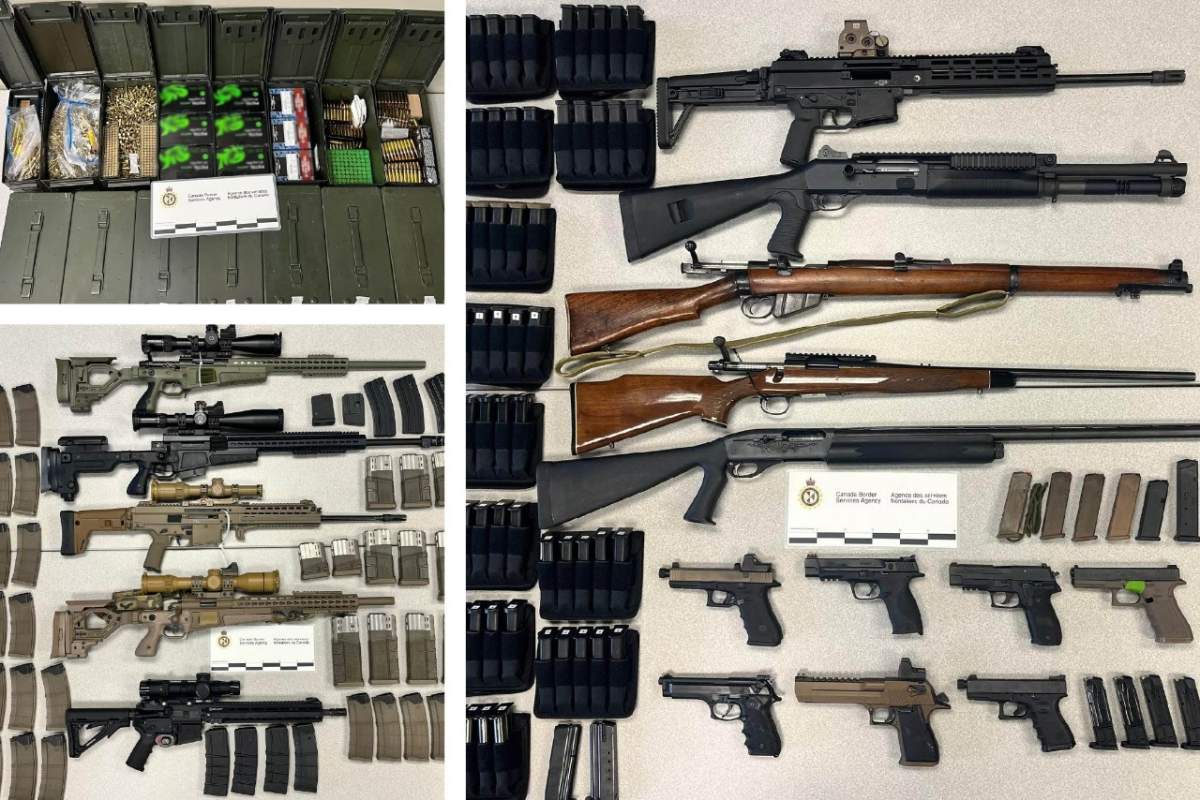A Royal Canadian Air Force major is facing a bounty of criminal charges, accused of possessing several prohibited firearms and shipping “numerous” weapons to Ontario from the United States through a Canadian military base.

The Canada Border Services Agency (CBSA) said Wednesday that Maj. Kendrick Barling returned to Canada in August after being posted in the U.S. for five years.
While Barling was shipping his household belongings back home through CFB Trenton, “numerous undeclared firearms were discovered hidden throughout the shipment,” the CBSA said in a statement.
In October, the CBSA’s Ontario Firearms Smuggling Enforcement Team executed search warrants at two residences — one in Kingston, the other in Petawawa — and seized seven handguns, 10 rifles and assault rifles and two shotguns. Many of the firearms had duplicate serial numbers, according to the CBSA.
Authorities say they also seized about 45,000 rounds of ammunition and “hundreds” of magazines, including AR-15 over-capacity magazines.
Barling has been charged with five counts of smuggling goods into Canada, nine counts each of unauthorized importing of a firearm and importing a firearm knowing it was unauthorized, and two counts of importing goods without a permit. He also faces two counts of contravening transportation regulations and two counts of making false statements.
He is due to make his next court appearance on Dec. 22.

Get breaking National news
A spokesperson for the Department of National Defence told Global News the Canadian Armed Forces (CAF) was aware of the charges against Barling, who the department said serves at the First Canadian Division Headquarters in Kingston.
“CAF members are held to a high standard of professional and personal conduct, and we take these allegations very seriously,” Maj. Soomin Kim said in an email.
Kim said the department would not comment further on Barling’s status in the CAF or the security protocols at CFB Trenton.
CBSA statistics show firearm seizures at the Canadian border have risen dramatically over the past two years. In the previous fiscal year, 1,034 firearms were seized, down from 1,203 the year before but well up from the previous three years, when between 500 and 750 firearms were seized.
Officials seized 250 firearms in the first quarter of the current fiscal year, according to the most recent data.

Last spring, Canada and the U.S. entered a new collaborative gun tracing deal aimed at cracking down on cross-border firearm smuggling.
“This successful investigation is another example of collaboration between law enforcement partners, such as the Bureau of Alcohol, Tobacco, Firearms and Explosives in the United States of America, as we work together to keep our communities safe,” Eric Lapierre, the CBSA’s northern Ontario regional director, said in the statement announcing Barling’s arrest Wednesday.
While the Canadian Justice Department has acknowledged the U.S. is the largest source of illegal firearms that are smuggled north of the border, there has been limited data that tracks exactly how many guns come into Canada every year, where they come from and what they are used for.
The Toronto Police Service has said 85 per cent of the city’s crime guns are arriving from the U.S.









Comments